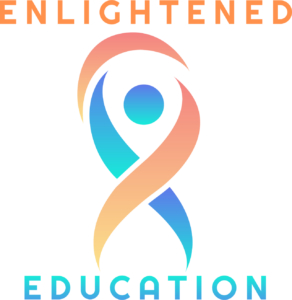Are you looking to create meaningful and impactful learning experiences for your students? As educators, we understand the significance of enhancing learning experiences to promote student engagement, motivation, and academic achievement. One of the key factors in achieving this goal is the implementation of effective curriculum and instruction strategies. In this blog post, we will explore the essential elements of effective curriculum and instruction, backed by research and best practices, to help you create engaging and enriching learning environments for your students.
Understanding Curriculum and Instruction Strategies
Before we delve into effective strategies, let’s clarify the concepts of curriculum and instruction. Curriculum refers to the overall plan and content designed for teaching and learning. It encompasses the goals, objectives, learning standards, and materials used to guide the educational process. On the other hand, instruction strategies encompass the methods, techniques, and approaches employed by teachers to deliver the curriculum and facilitate student learning. These two components are interconnected, with curriculum providing the framework and instruction strategies serving as the vehicles for delivering the curriculum effectively.
Key Elements of Effective Curriculum and Instruction Strategies
A. Alignment with learning goals and objectives:
To enhance learning experiences, it is crucial to set clear and measurable learning goals and objectives. Effective curriculum and instruction strategies align with these goals to ensure that teaching and learning activities are purposeful and focused. When there is alignment, students understand what they are expected to learn, and teachers can design instructional approaches that effectively support these goals. Regular assessment and feedback also play a vital role in monitoring progress and adjusting strategies as needed.
B. Differentiation and Personalization:
Students have diverse learning styles, strengths, and interests. Effective curriculum and instruction strategies embrace differentiation and personalization to cater to these individual needs. By tailoring instruction to meet the unique requirements of each student, educators can optimize engagement, motivation, and overall learning outcomes. Differentiation can be achieved through various means, such as providing varied resources, offering choices in assignments, and adapting instructional methods to suit different learning preferences.
C. Engaging and Relevant Content:
Engaging students with relevant content is fundamental to fostering active participation and deep understanding. Effective curriculum and instruction strategies integrate real-world examples, authentic tasks, and interdisciplinary connections to make learning more meaningful and applicable to students’ lives. By relating the curriculum to their interests and experiences, students are more likely to connect with the subject matter and develop a genuine curiosity for learning.
D. Active Learning and Hands-on Experiences:
Passive learning through lectures and rote memorization is no longer sufficient to meet the needs of today’s learners. Effective curriculum and instruction strategies prioritize active learning and hands-on experiences. Encouraging students to actively participate, collaborate, and apply their knowledge through problem-solving, experiments, projects, and discussions fosters critical thinking, creativity, and deeper engagement with the subject matter.
E. Integration of Technology:
In the digital age, technology can significantly enhance curriculum and instruction. Effective strategies incorporate technology tools and resources to expand learning opportunities, facilitate communication, and promote interactive learning experiences. Whether through virtual simulations, online resources, educational apps, or collaborative platforms, the integration of technology can help bridge gaps, enhance accessibility, and create a dynamic learning environment.
Research-based Approaches and Best Practices
Effective curriculum and instruction strategies are informed by research and best practices. Numerous studies have highlighted the impact of certain approaches on student learning outcomes. For instance, the use of formative assessment, cooperative learning, problem-based learning, and metacognitive strategies has shown positive effects on student engagement, critical thinking, and overall achievement. By staying updated with research findings and implementing evidence-based practices, educators can ensure they are using the most effective strategies to enhance learning experiences.
Challenges and Solutions in Implementing Effective Strategies
Implementing effective curriculum and instruction strategies may present challenges. Limited resources, time constraints, and resistance to change can hinder the adoption of innovative approaches. However, overcoming these challenges is possible with the right strategies. Building a supportive professional network, seeking professional development opportunities, advocating for resources, and gradually implementing changes can help educators navigate these obstacles. Real-life examples of successful implementation can inspire and provide practical insights into overcoming challenges.
Impact of Effective Curriculum and Instruction Strategies
Implementing effective curriculum and instruction strategies can have a profound impact on students’ learning experiences and overall development. Engaged students are more likely to exhibit higher levels of motivation, ownership of learning, and a desire to pursue lifelong learning. Improved academic achievement, critical thinking skills, and problem-solving abilities are also outcomes of effective strategies. By investing in enhancing learning experiences, educators contribute to students’ holistic growth and equip them with the necessary skills and knowledge for success in the future.
Takeaway
Enhancing learning experiences through effective curriculum and instruction strategies is a journey that requires dedication, adaptability, and a student-centered approach. By aligning curriculum and instruction, embracing differentiation, incorporating engaging content, promoting active learning, and leveraging technology, educators can create dynamic and impactful learning environments. Through continuous research, professional development, and a commitment to innovation, we can empower our students to thrive and reach their full potential. Let us embark on this journey together, creating meaningful and transformative learning experiences for the next generation.

